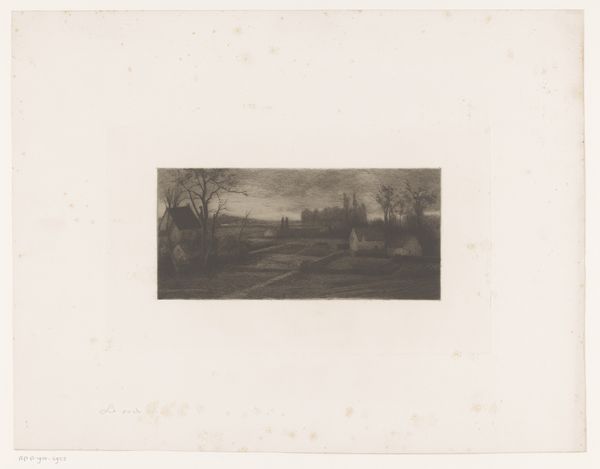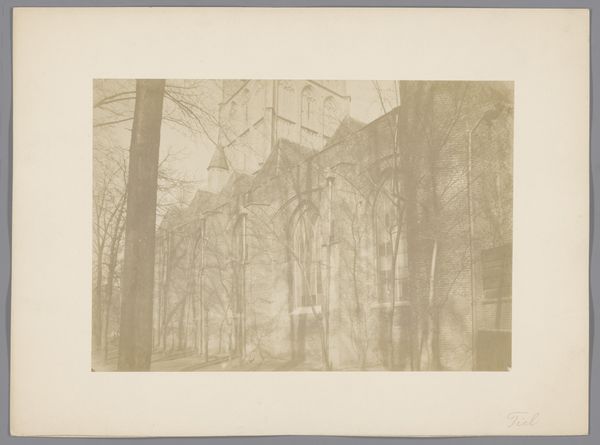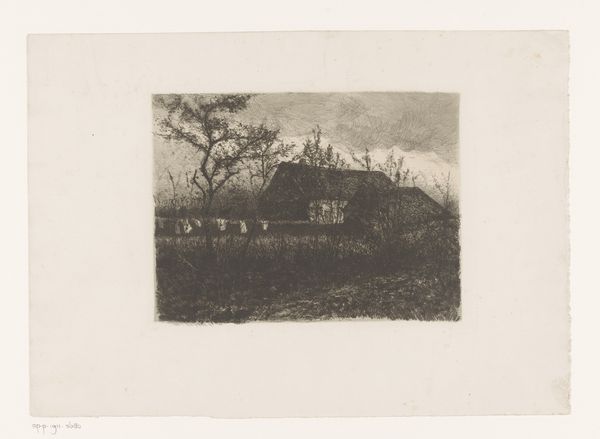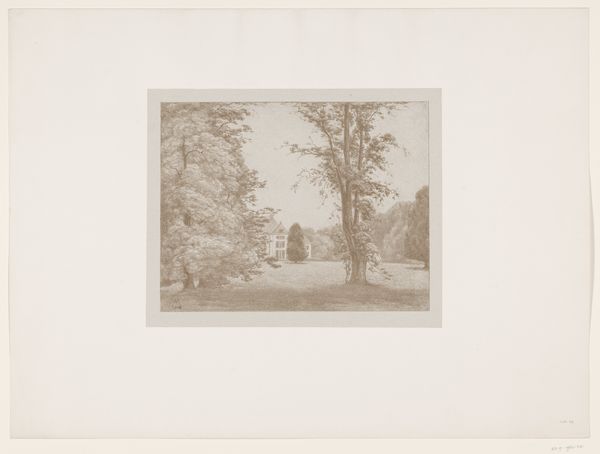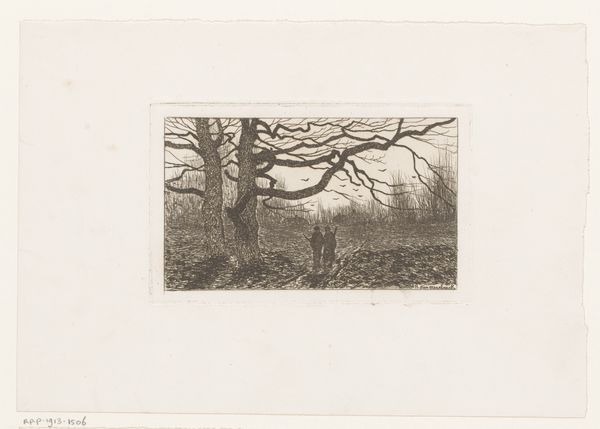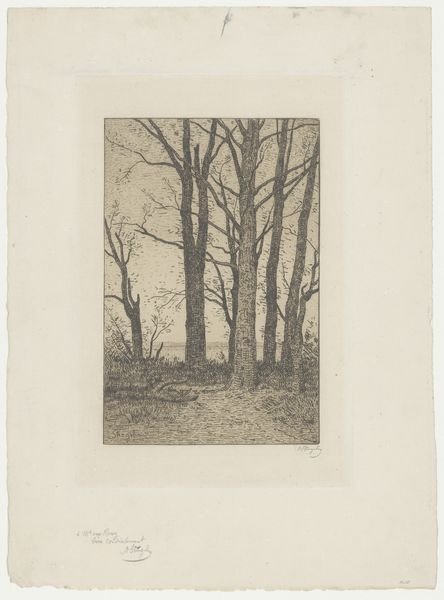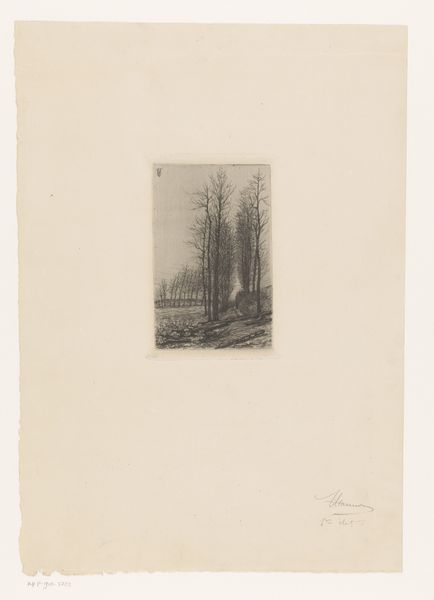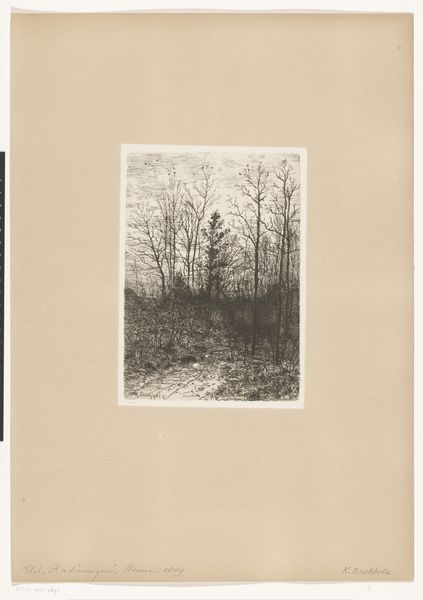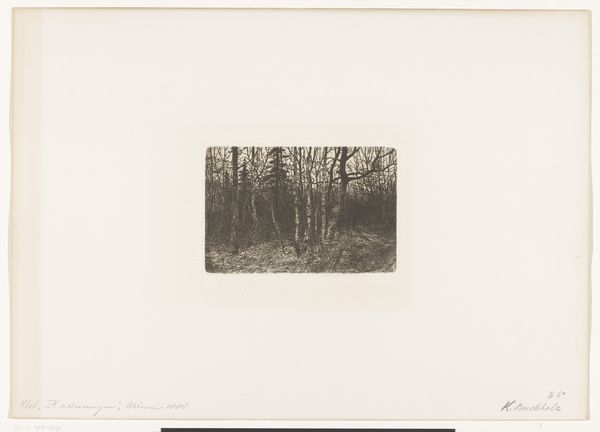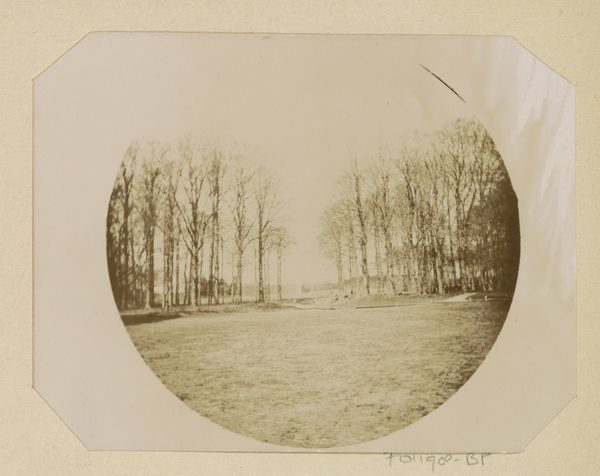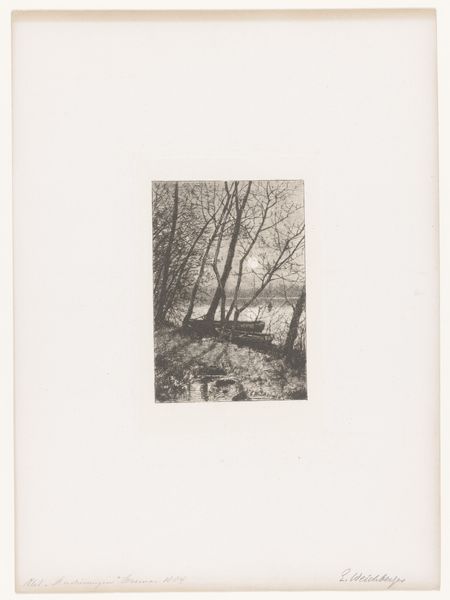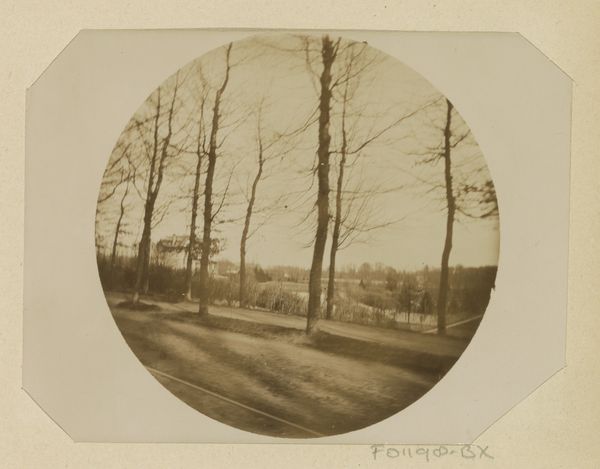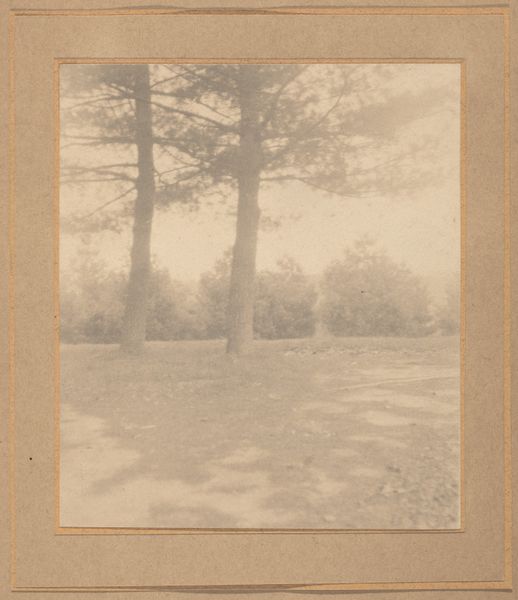
View of Waalseilandsgracht from Prins Hendrikkade, Amsterdam Possibly 1900 - 1905
0:00
0:00
georgehendrikbreitner
Rijksmuseum
Dimensions: height 260 mm, width 372 mm, height 367 mm, width 450 mm
Copyright: Rijks Museum: Open Domain
Curator: Breitner’s "View of Waalseilandsgracht from Prins Hendrikkade, Amsterdam," likely captured between 1900 and 1905, is a captivating gelatin silver print, currently residing here at the Rijksmuseum. Editor: The atmosphere strikes me immediately. A somber, almost melancholic, portrayal of urban life. The stark contrast and bare trees add a certain austerity. Curator: Absolutely. The composition relies heavily on contrasts, and how those lead the eye through the frame. Notice the interplay of the sharp silhouettes of the bare trees against the softer focus of the buildings in the background. And how the rigging lines repeat their verticality. Editor: Those elements are powerful, yes. Yet, I also see this as a document of the rapidly changing urban landscape of Amsterdam. The industry of the harbor juxtaposed against everyday figures: a child, a dog, both somewhat lost in this transition. Curator: Interesting perspective! I’d argue that Breitner, in his impressionistic style, used the geometry of this urban scene to explore more formal properties like the play of light, and the balance within the arrangement of forms. Editor: I can agree with that, but can we also consider how his photographs reflect the social realities of the working class at the time? The blurred figures become emblematic of the countless individuals affected by urbanization and industrial growth, rendered invisible by the inexorable march of so-called progress. Curator: Perhaps. However, I believe that such arguments must consider the photographic values as a primary focus. We might say the choice of framing is as political as the people that are included in the picture, and who were Breitner’s frequent models in the poorer quarters. Editor: I see what you mean. There's certainly a calculated harmony within its components. Perhaps we can look at it from both lenses simultaneously; acknowledging its formal mastery as well as its inherent sociopolitical context. Curator: A compelling conclusion that gives proper appreciation to Breitner’s genius. Editor: Indeed! There’s always more to unpack.
Comments
rijksmuseum about 2 years ago
⋮
Breitner must have walked many a kilometre around Amsterdam at the turn of the century. The city was the painter’s working space. He filled his sketchbook with drawings of what he saw in the streets, and photographed literally everything he came upon. Amsterdam is shrouded in mist in this atmospheric image of a boy and a dog.
Join the conversation
Join millions of artists and users on Artera today and experience the ultimate creative platform.
